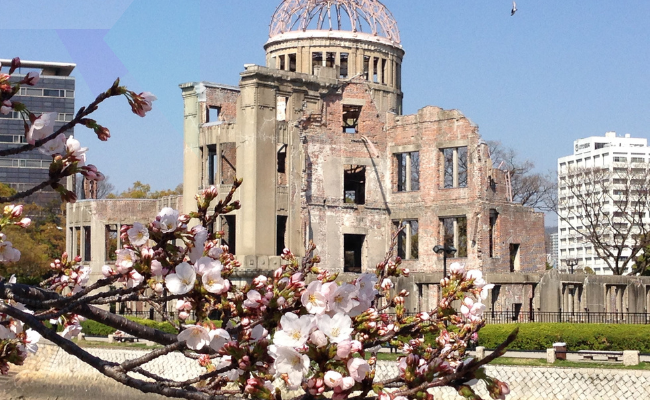I’ve been trying different Osaka local dishes, and there are some I keep coming back to. These are the foods locals love, and they capture much of what makes eating in this city so special.
Osaka has earned its nickname as “Japan’s kitchen,” and after spending time here, it’s easy to see why. The food culture is casual, social, and centered around sharing meals with others. These Osaka local dishes embody that spirit perfectly.
Some of these dishes were completely new to me when I first tried them. Others I had heard of but only truly appreciated after tasting them in their home city. What they all have in common is that they are deeply satisfying and best enjoyed together, reflecting the heart of Osaka’s vibrant food culture.
Takoyaki – Osaka’s Famous Octopus Balls
Everyone talks about takoyaki, and honestly, they’re right to do so. These are golf ball-sized pieces of batter with octopus inside, cooked in special round molds until they’re crispy on the outside and gooey on the inside.
The first time I tried them, I burned my tongue because I was too eager. They’re ridiculously hot when they come off the grill. Now I always wait a few minutes before biting into them.
Good takoyaki should be crispy on the outside but almost molten inside. They’re topped with takoyaki sauce, mayo, bonito flakes, and seaweed powder. You’ll find takoyaki stands everywhere in Osaka, but the best ones are often small, family-run places with just one or two people working.
I’ve tried takoyaki from quite a few different places now. The chain spots, like Takoyaki Juhachiban, are decent, but some of the smaller street stalls have more character.
Okonomiyaki – The Social Pancake
This is essentially a savory pancake with cabbage and other ingredients of your choice. The name literally means “grilled as you like it,” which pretty much sums up the whole experience.
What I love about okonomiyaki is that you usually cook it yourself on a grill built into your table. It’s fun, social, and the food always tastes better when you’ve made it yourself. The staff will help you get started if needed.
Osaka-style okonomiyaki differs from other regions in that everything is mixed together before cooking. You end up with a thick, hearty pancake that’s crispy on the bottom and soft on top.
I usually opt for pork okonomiyaki because it’s classic, but you can also get seafood, cheese, or pretty much anything else mixed in.

Kushikatsu – Fried Everything on Sticks
This is deep-fried skewered food – meat, vegetables, seafood, even cheese, all breaded and fried until golden. It originated in Osaka and remains one of the city’s signature dishes.
Here’s the most important rule: never double-dip in the communal sauce. I’m serious about this. There are signs everywhere in kushikatsu restaurants warning about double-dipping. Dip once, eat, repeat with a fresh skewer.
Shinsekai is the traditional kushikatsu neighborhood, and it feels like stepping back in time. The restaurants are small, the atmosphere is lively, and you can easily spend hours trying different combinations of skewers and drinking beer.
I usually start with the basics – pork, chicken, beef – then move on to vegetables like lotus root and eggplant. Some places offer really creative options, such as cheese or even ice cream kushikatsu.
Kitsune Udon – Comfort in a Bowl
Osaka is famous for its udon noodles, which are thick, chewy, and distinctly different from the thin soba noodles found in Tokyo. Kitsune udon comes with sweet, simmered fried tofu on top.
The broth here is lighter than Tokyo’s version – it’s made mostly from kombu instead of bonito, so it has this clean, delicate flavor that lets you taste the wheat in the noodles.
This is my go-to comfort food when I’m feeling under the weather or when it’s cold outside. It’s warm, filling, and gentle on your stomach. Nothing fancy, just pure satisfaction in a bowl.
Ikayaki – Grilled Squid Pancake
This is chopped-up squid mixed into pancake batter and grilled flat. It’s a dish that’s specific to Osaka that you won’t find in other parts of Japan.
When I first tried ikayaki, it was different from what I expected. The squid lends it a nice, chewy texture, and the batter becomes crispy on the outside. They usually fold it in half and serve it hot, accompanied by sauce.
You’ll find ikayaki at street stalls and festivals throughout the city. It’s affordable and filling.
Butaman – Steamed Pork Buns
These are fluffy steamed buns filled with seasoned pork, and they’re sold everywhere – convenience stores, train stations, specialty shops. Osaka’s butaman tend to be bigger and more generously filled than what you’d find in other cities.
I grab these when I need something quick and portable. The bun is soft and slightly sweet, while the filling is savory with pork, onions, and sometimes mushrooms. They’re perfect for eating on the go, especially during colder months.
Most convenience stores keep them in heated cases, so they’re always ready to eat. For about 150 yen, it’s hard to beat.
Oden – Winter Comfort Food
Oden is a hot pot with various ingredients simmered in a light broth, including hard-boiled eggs, daikon radish, tofu, and different kinds of processed fish products. It’s especially popular during winter.
In Osaka, the broth tends to be lighter and more delicate than in other regions. Each ingredient absorbs the flavor of the broth, so everything tastes like a more concentrated version of its original flavor.
You’ll find oden at convenience stores, specialty restaurants, and sometimes street stalls. I usually get it when it’s cold outside and I want something warming and satisfying.
Where to Actually Find This Stuff
Most of these dishes aren’t limited to tourist areas. Yes, Dotonbori has the highest concentration of food stalls, but some of the best versions can be found in neighborhood shops where locals actually eat.
Shinsekai is the place for kushikatsu. Dotonbori has tons of takoyaki options. Okonomiyaki shops are everywhere, but I’ve found some of my favorites in residential areas, though I’m still discovering new places.
Don’t expect English menus at most places. However, many restaurants have plastic food displays outside, allowing you to simply point at what looks appealing.
Final Thoughts
These dishes are what make Osaka’s food culture special. They’re not fancy or Instagram-worthy, but they’re deeply satisfying and meant to be enjoyed with other people.
The best approach is to try a little of everything. Order different types of kushikatsu, share an okonomiyaki, and grab some takoyaki for the walk between restaurants. Osaka food is social food – it’s designed to be shared and enjoyed together.
Don’t be surprised if you end up eating more than you planned. The portions are generous, the flavors are addictive, and there’s always one more dish you want to try. For a complete guide to exploring Osaka beyond food, check out our Osaka Travel Guide.
A First-Time Guide to Osaka, Japan
Osaka is one of those cities where the food scene really defines the experience. The whole city seems built around eating well and enjoying it with other people.
If you’re planning your first visit to Osaka, here’s what I wish someone had told me before I went – the practical stuff that actually makes a difference in how much you’ll enjoy your time there.





